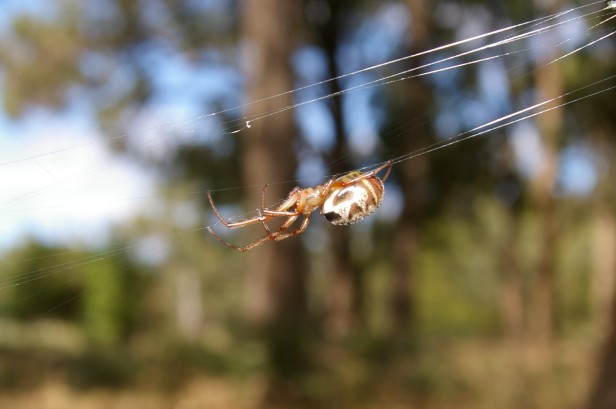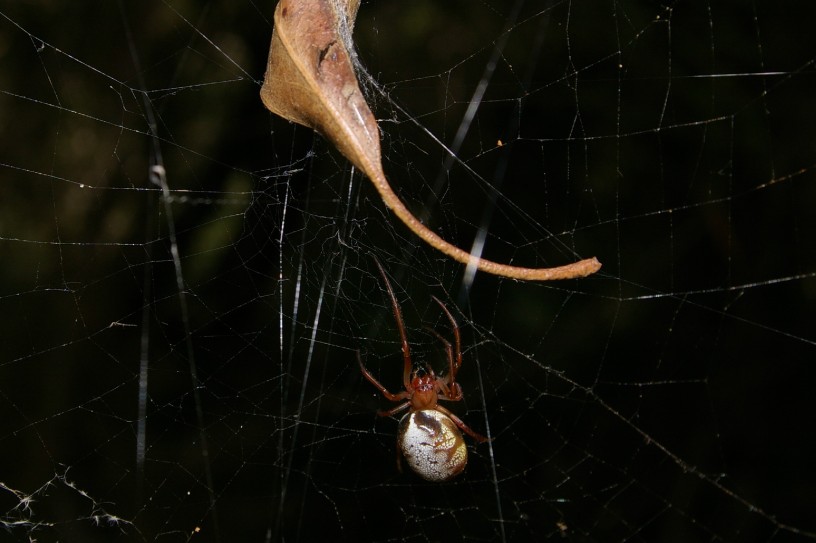During summer a common sight in southern and eastern Australia’s woodlands, open forests and urban gardens is an untidy and almost circular web strung between vegetation with a curled leaf seemingly caught in its centre. This is usually the workings of the Leaf-curling Spider Phonognatha spp.

There are currently 7 species of Phonognatha recognised wordwide with 4 in Australia. By far the most common and widespread in Australia is P. graeffei (pronounced greef-e-i) which is found in Tasmania and along the entire east coast of Australia to South Australia. Males reach a body length of about 6mm and females 10-12mm. They currently belong to the Orb-weaving family Araneidae but there is ongoing debate as to whether they should be in this family or not and in the past the genus has being placed in other families.

Leaf-curling Spiders, after constructing a web, will haul up a leaf from the ground at night using a silk line and attach it to the web. This is then curled up with more silk until it forms a shelter in which to hide. The top end is closed with silk and the base is open. I’ve noticed Eucalyptus leaves are favourites with this species in Victoria but I have seen them use Snowy Daisy-bush Olearia lirata and Hop Goodenia Goodenia ovata leaves as well. Occasionally other items such as paper or even an empty snail shell are used instead.

Once the leaf shelter is completed the male will shift in with a female or sometimes live close by. This is typically an immature female who lives in the top part of the leaf while the male guards the entrance from rival males and catches insects caught in the web.

As soon as the female reaches maturity the male mates with her, occasionally resulting in the male being eaten. This female then moves out and constructs her own leaf shelter amongst nearby vegetation where she will lay her eggs. As with most other ‘modern’ spiders (Araneomorphae) they have short lives and both the male and female Leaf-curling Spiders will die at the end of summer to be replaced by their children.
Once hatched, the spiderlings themselves will begin hoisting up small leaves as practice for when they are ready to shift out of home and begin the process all over again.


Great stuff! I really enjoy reading about the behaviour of spiders and insects – so thanks : )
LikeLike
Thanks Tanya, they’re a whole other world which many people tend to overlook.
Craig
LikeLike
Absolutely amazing. We have a lot of leaf curling spiders here, but I have never managed to photograph the actual spider. The description of their behaviour is fascinating and inspires me to focus on them a little more. Thank you for an interesting and informative read.
LikeLike
Thanks for the comment. They’re difficult to photograph but with a little patience they do show themselves occasionally.
LikeLike